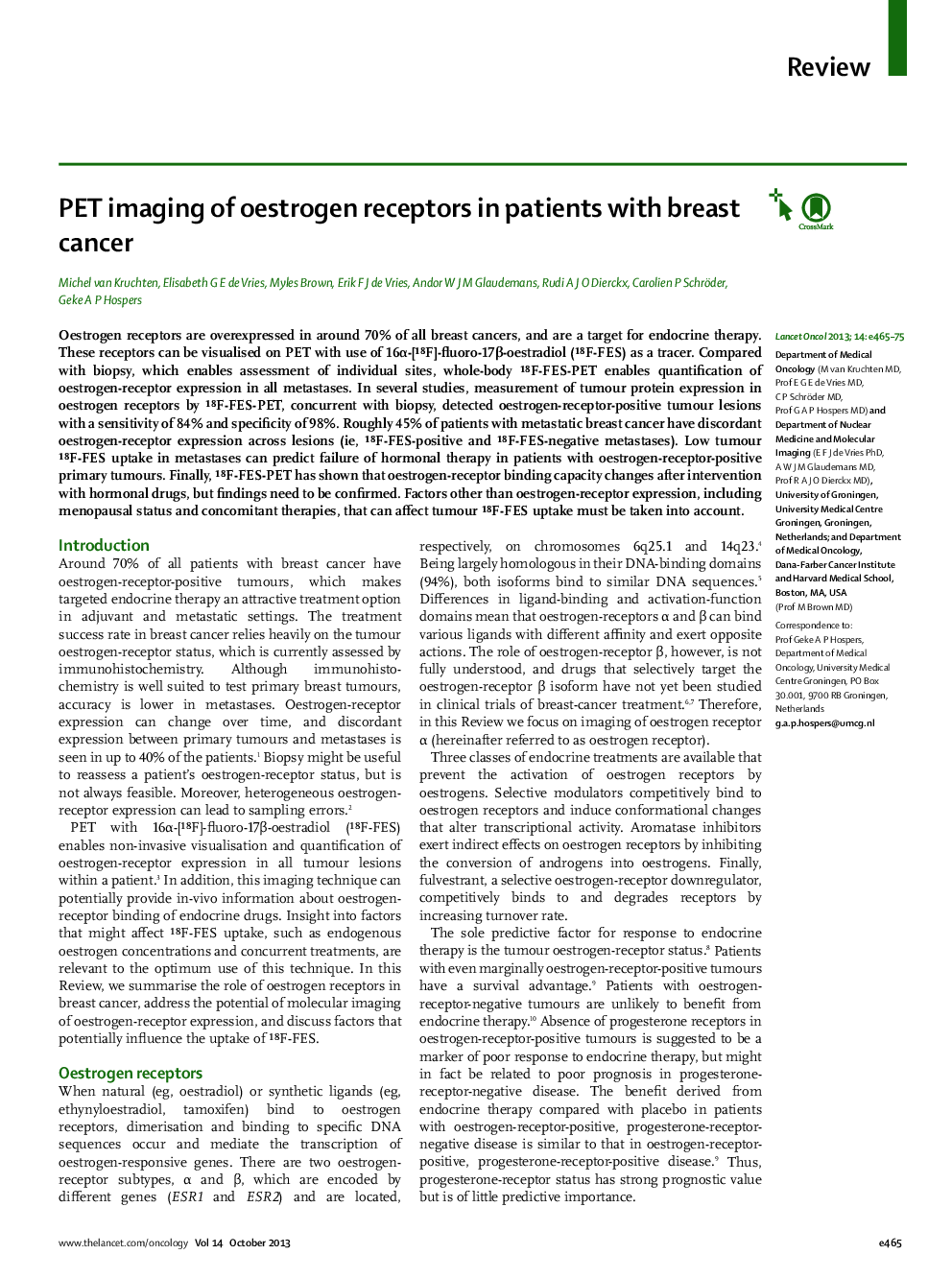| Article ID | Journal | Published Year | Pages | File Type |
|---|---|---|---|---|
| 3994539 | The Lancet Oncology | 2013 | 11 Pages |
SummaryOestrogen receptors are overexpressed in around 70% of all breast cancers, and are a target for endocrine therapy. These receptors can be visualised on PET with use of 16α-[18F]-fluoro-17β-oestradiol (18F-FES) as a tracer. Compared with biopsy, which enables assessment of individual sites, whole-body 18F-FES-PET enables quantification of oestrogen-receptor expression in all metastases. In several studies, measurement of tumour protein expression in oestrogen receptors by 18F-FES-PET, concurrent with biopsy, detected oestrogen-receptor-positive tumour lesions with a sensitivity of 84% and specificity of 98%. Roughly 45% of patients with metastatic breast cancer have discordant oestrogen-receptor expression across lesions (ie, 18F-FES-positive and 18F-FES-negative metastases). Low tumour 18F-FES uptake in metastases can predict failure of hormonal therapy in patients with oestrogen-receptor-positive primary tumours. Finally, 18F-FES-PET has shown that oestrogen-receptor binding capacity changes after intervention with hormonal drugs, but findings need to be confirmed. Factors other than oestrogen-receptor expression, including menopausal status and concomitant therapies, that can affect tumour 18F-FES uptake must be taken into account.
